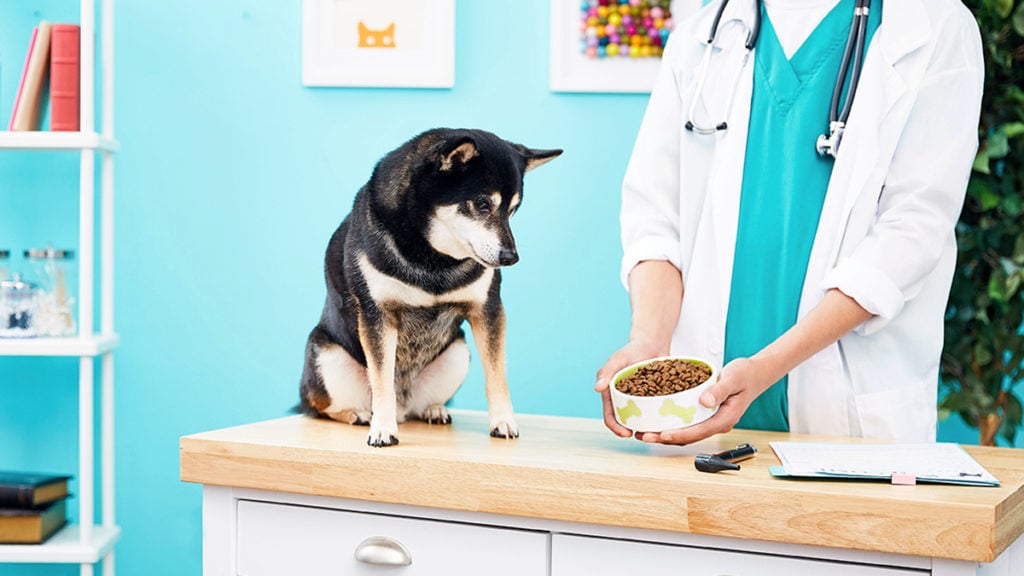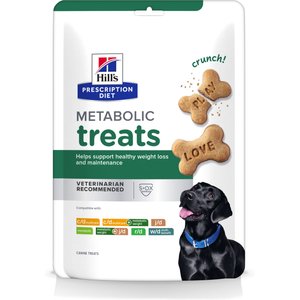If your pooch has canine diabetes, it’s important to familiarize yourself with the best foods to give her. Diabetes in dogs is similar to the condition in humans; it affects your dog’s pancreas where it cannot produce enough insulin to process your pup’s glucose levels, leading to an excess of glucose in the body. The right diet can help better control your diabetic dog’s blood sugar levels and keep her in good health.
But before you pick a diabetic dog food, first you need to find out what ingredients it contains.
What Should Diabetic Dog Food Consist Of?
Pet parents should always feed their diabetic dog as directed, based on their veterinarian’s recommendation.
“The ideal diabetic dog food should have between 20 percent to 25 percent carb matter on a dry matter basis—anything higher than 30 percent is considered high-carb for a diabetic pooch,” says Dr. Jeff Werber, chief veterinarian of the Century Veterinary Group in Los Angeles, California.
Dr. Werber adds that the single-most important thing for diabetic dogs is to stay away from carbohydrates as much as possible.
“The more carbs we give the body, the more sugar is being produced, which in turn spikes blood sugar levels,” Dr. Werber says.
A fiber-rich diet, like Royal Canin’s Glycobalance formula and its canned food counterpart, from the Royal Canin dog food line, is important for regulating your pup’s blood sugar levels. Both soluble and insoluble fibers are essential for helping to minimize glucose fluctuations in diabetic dogs.
Soluble fibers become a gel-like consistency and attract water, slowing digestion. Insoluble fibers don’t dissolve in water, causing foods to go through the digestive tract close to its original form. These both contribute to healthy digestion and reducing the occurrence of blood sugar spikes.
Dr. Werber notes that “Different dogs need different types of fiber and fiber content”, so make sure to check with your veterinarian for which fibers are best for your dog.
How Often Should I Feed My Diabetic Dog?
So, you found the perfect diabetic dog food. Now you need to know how often to feed it.
“Although it depends on whether your dog is insulin dependent or independent, the most common method is feeding your dog two evenly spaced-apart meals per day, just before insulin administration, says Dr. Lindsey Bullen, DVM, DACVN at the Veterinary Specialty Hospital of the Carolinas.
This ensures that your pup’s blood glucose rises when the insulin is most active, Dr. Bullen explains.
Maintaining a consistent and regular feeding routine is important to ensure your dog’s blood sugar levels don’t skyrocket throughout the day. Consistency also applies to the type of dog food you feed your pup.
“Diabetic furry patients should be fed the same food or same type of food consistently,” Dr. Bullen says. “Switching from one food to another can result in altered responses to insulin.”
If there is a diabetic dog food that works well for your pooch, stick to giving him this same formula every day.
What Not to Feed a Diabetic Dog
Treats should only be given sparingly. And stay away from refined, sugary and processed foods as much as possible.
“Less than 10 percent of the daily allocation of nutrients should come from dog treats, as this can unbalance your dog’s diet and blood sugar levels,” Dr. Bullen says.
If you like to spoil your diabetic pooch, opt for treats that won’t spike his blood glucose levels. Hill’s Prescription Diet Metabolic Canine Dog Treats are specifically developed with high levels of soluble and insoluble fiber to help regulate your pup’s blood sugar.
Or, instead of giving your dog treats that will unnecessarily spike your dog’s blood sugar levels without providing essential nutrients, “opt for using your dog’s kibble as treats if needed,” suggests Dr. Bullen.
Some veterinarians recommend keeping diabetic dogs away from “foods marketed for pets with sensitive stomachs, as they are highly digestible and designed for quick absorption of nutrients, which could lead to higher blood glucose levels,” Dr. Bullen explains.
“However, if your pooch has a need to be on a highly digestible diet, the insulin can often be adjusted to accommodate,” she says.
Preventing Diabetes in Dogs
The most common type of diabetes in dogs is insulin-dependent Type 1 diabetes. The lesser common Type 2 diabetes may be prevented by maintaining your dog’s weight through a healthy diet and exercise.
A high-protein dog food, such as the Purina Pro Plan Veterinary Diet Overweight Management Canned Dog Formula(also available in the dry food), helps promote weight loss while helping to maintain lean body mass.
Remember to talk to your veterinarian before making any changes to your dog’s diet.
Read More:
- Veterinary Diets for Dogs and Cats
- Why Is Fiber for Dogs So Important
- The Key to a Weight Management Diet for Dogs
Want to give your pet superior health and nutrition? Chewy offers a variety of premium dog food so you can feed your pup the highest quality ingredients. Shop Chewy's selection of premium dog food here.
Share:














